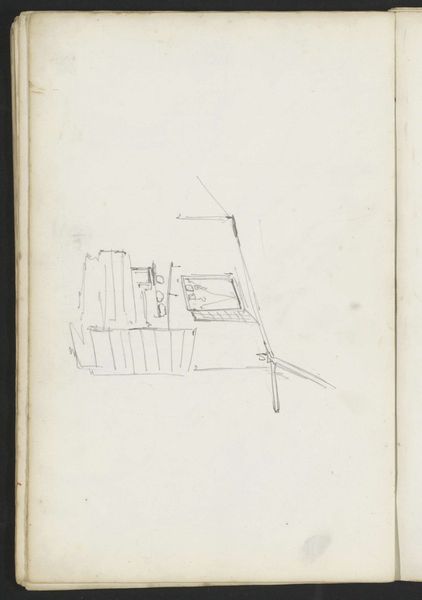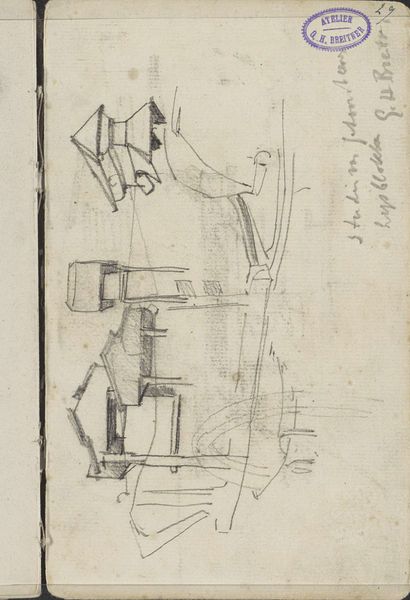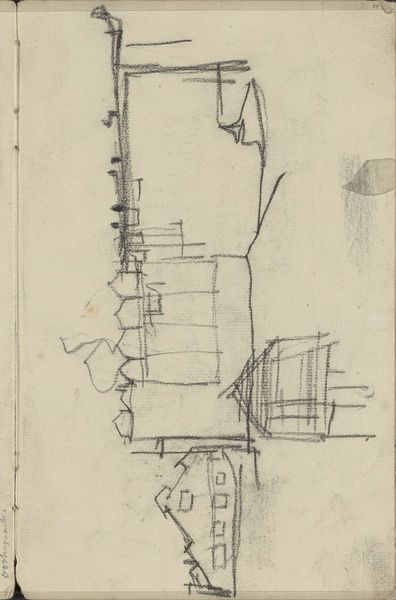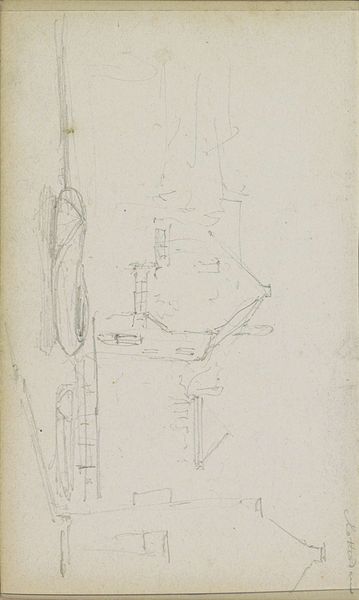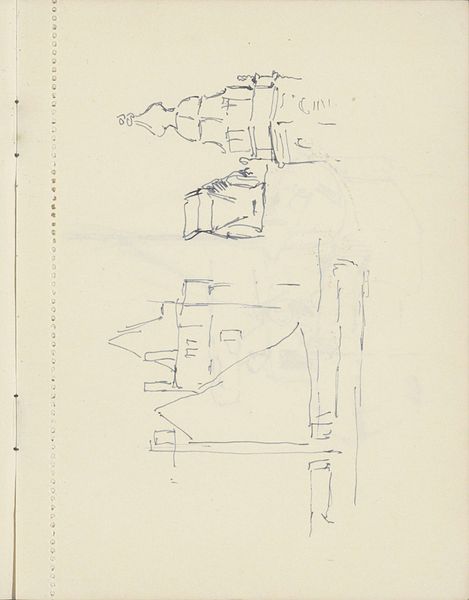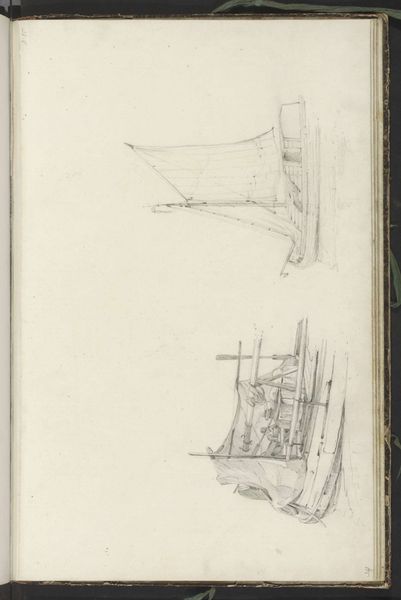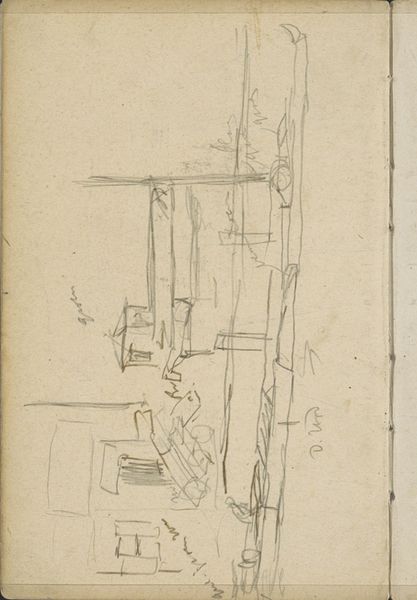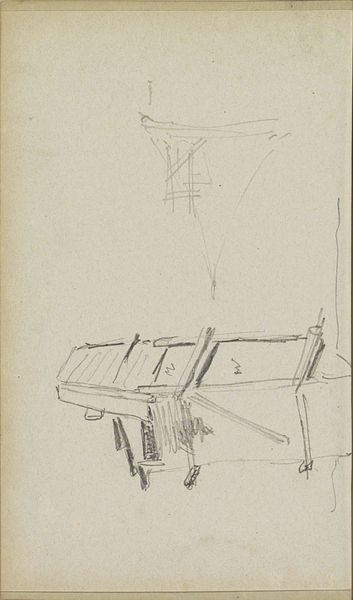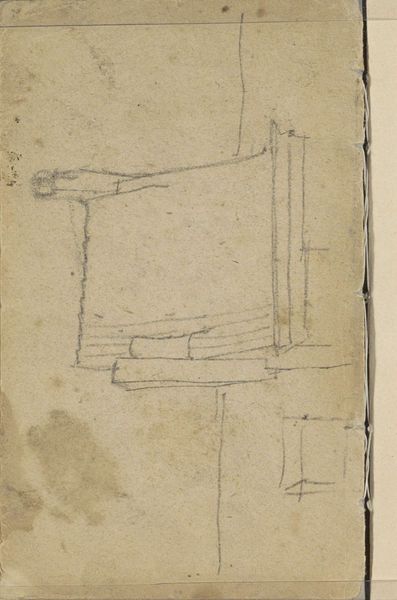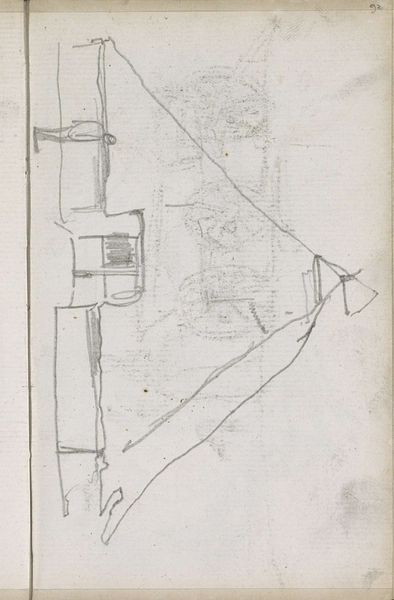
drawing, paper, pencil
#
drawing
#
amateur sketch
#
aged paper
#
toned paper
#
light pencil work
#
pencil sketch
#
old engraving style
#
hand drawn type
#
paper
#
personal sketchbook
#
geometric
#
pencil
#
line
#
sketchbook drawing
#
sketchbook art
Copyright: Rijks Museum: Open Domain
Editor: This is Adrianus Eversen’s “Architectuurstudies,” likely from sometime between 1828 and 1897. It's a pencil drawing on paper, and what strikes me most is its fragility and tentative quality. What do you see in this piece, beyond just a sketch of architectural forms? Curator: The seemingly simple lines belie a deeper conversation, one that touches upon power, access, and the very act of documenting space. How do we read these “studies” in light of the exclusionary practices embedded within architecture itself? Editor: Exclusivity in architecture? Curator: Yes, consider who historically controlled the design and construction of buildings, of cities. These weren't neutral endeavors. Class, race, and gender shaped whose needs were prioritized, whose aesthetics were valued, and ultimately, who felt a sense of belonging within those spaces. Doesn’t the somewhat erased quality of the sketches speak to those silences? Editor: That's a fascinating point. It makes me think about whose stories are left out of these grand narratives of architecture. So, the sketch isn't just about form, but about the social structures implied by those forms? Curator: Precisely. Eversen’s drawing can be viewed as a fragment of a larger dialogue about societal hierarchies inscribed within the built environment. It prompts us to consider the unseen forces shaping our surroundings, encouraging critical inquiry into the political dimensions of space. Editor: Wow, I never would have considered all that just from looking at some pencil lines. I’ll never see architectural drawings the same way! Curator: And that is the power of contextualising art—to transform observation into informed understanding.
Comments
No comments
Be the first to comment and join the conversation on the ultimate creative platform.
